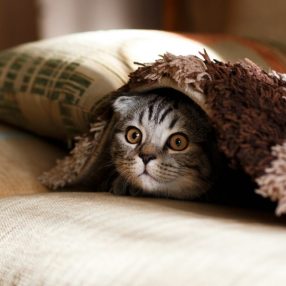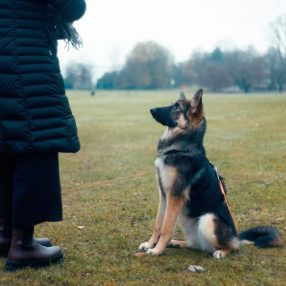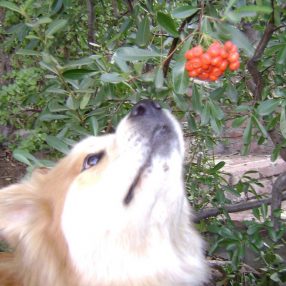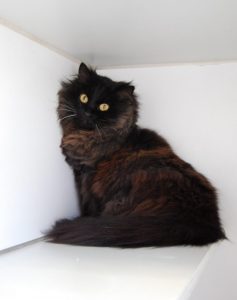 In Western cultures, black cats are sometimes associated with bad luck, disease and witchcraft. Over the centuries, this sadly has not only led to the mass killing of black cats, but also the witches who care for them. Cross the ocean and things are quite different.
In Western cultures, black cats are sometimes associated with bad luck, disease and witchcraft. Over the centuries, this sadly has not only led to the mass killing of black cats, but also the witches who care for them. Cross the ocean and things are quite different.
In Ancient Egypt, cats were deified – considered gods — and mummified. In Asia and the U.K., a black cat is considered lucky, yet still to this day in the minds of some Americans, it is considered bad luck if a black cat crosses your path. If a black cat walks towards you however, it brings good fortune, but if it walks away, it takes the good luck with it. If a black cat crosses your path while you’re driving, turn your hat around backwards and mark an X on your windshield to prevent bad luck. But what if you aren’t wearing a hat and don’t have anything to write with?
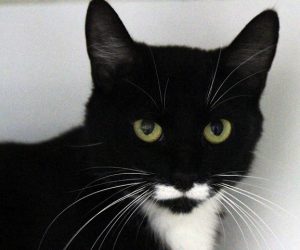 Finding a white hair on a black cat brings good luck. Don’t pluck it though, or your luck may turn bad. Once you are asleep however, dreaming of a black cat is lucky.
Finding a white hair on a black cat brings good luck. Don’t pluck it though, or your luck may turn bad. Once you are asleep however, dreaming of a black cat is lucky.
Who makes this stuff up?!
In 16th century Italy, people believed that if someone was sick he would die if a black cat lay on his bed. According to CBS News back in July of 2007
Predicting the death of a patient, even an elderly, demented one, is an inexact science, even for a doctor with decades of medical experience. But a cat in a Providence, R.I., nursing home, an animal shelter refugee named Oscar, seems to have a sixth sense about when residents in the home’s advanced dementia unit are about to pass away. And his actions can sometimes help alert the staff to notify family members in time for them to get to the nursing home to tell their loved-ones goodbye. When he senses their time is near, Oscar goes to the room, jumps onto the bed, curls up next to the patient, and purrs. The 2-year-old cat provides welcome company for grieving family members and staff keeping their bedside
vigil; sometimes he fills in for family members who haven’t yet arrived at the bedside.
The tortoiseshell and white cat (not black) spends its days pacing from room to room, rarely spending any time with patients except those with just hours to live and by 2010, Oscar had predicted 50 deaths!
 Cats, like other animals, are very intuitive and can sense things that humans cannot. Their eyesight and sense of smell are much more acute than ours, and because cats rely primarily on body language when communicating with other cats, they must be tuned into behavioral, as well as physiological changes in other animals, including humans. This does include detecting weakness or changes in body odor and temperature.
Cats, like other animals, are very intuitive and can sense things that humans cannot. Their eyesight and sense of smell are much more acute than ours, and because cats rely primarily on body language when communicating with other cats, they must be tuned into behavioral, as well as physiological changes in other animals, including humans. This does include detecting weakness or changes in body odor and temperature.
Black-coated dogs too are subject to weird accusations. False notions about black cats actually spills over to their canine counterparts. In British folklore, the black dog was said to be a nocturnal apparition associated with the devil. Throughout European mythology black dogs are associated with death and as guardians of the underworld or malevolent beings. Even to this day, “black dog” is a metaphor in the mental health industry to describe depression.
In cartoons, movies and on TV, black-coated dogs often portray the aggressive or more intimidating characters perpetuating this false stereotype of the good guy wearing white and the villain in the dark suit and hat.
The unfortunate outcome of this typecasting is that black dogs and cats are often the last to be adopted in animal shelters across the country. Although it makes sense that there are more black dogs in shelters because there are more black dogs in the world. Actually, the most popular dog in the United States for more than two decades has been the Labrador Retriever, with Black Labs coming in at number one over Chocolate and Yellow. Still, shelter staff and rescue volunteers have countless stories to share of wonderful black-coated dogs and cats that were impossible to find homes for due only to the color of their fur.
 In addition to the negative labeling black furred dogs and cats receive from many humans, lighting too creates an issue. Imagine when yours truly was honored with one of her first magazine writing assignments, but was then told bluntly, “No photos of black dogs!” At the time, one of my loves was my Mr. Rico (pictured at left) – one of the gentlest souls I’ve ever known. I was told that they “just don’t show up well in photographs.” Hmmphf!
In addition to the negative labeling black furred dogs and cats receive from many humans, lighting too creates an issue. Imagine when yours truly was honored with one of her first magazine writing assignments, but was then told bluntly, “No photos of black dogs!” At the time, one of my loves was my Mr. Rico (pictured at left) – one of the gentlest souls I’ve ever known. I was told that they “just don’t show up well in photographs.” Hmmphf!
With many people now “shopping online” first by looking at photos of pets on various websites before heading over to an animal shelter, photos don’t make a good impression equates to the animal not getting a second look. Some shelters are producing higher quality photos of their animals. I give kudos in particular to The Volunteers of the Burbank Animal Shelter and the Animal Rescue League Iowa – two shelters I’ve seen that make a point of achieving awesome photos. Some organizations are not yet capturing the beautiful, bright and good essence of black furred pets due to cost or logistics, so the gentle and kind features of black dogs and cats often do not show up as well as photos of canines with lighter colored coats. The human eye is drawn to light, so people often fall in love with the lighter-coated dog or the dog with unusual markings without ever noticing the darker colored pooch or feline hiding in the back of their kennel or enclosure.
Black dogs and cats are just as playful, loving and fun as white, brown, yellow or spotted animals. When adopting your next best friend, please be aware that Black Dog & Cat Syndrome is real, so…
don’t judge a pet by his fur color! 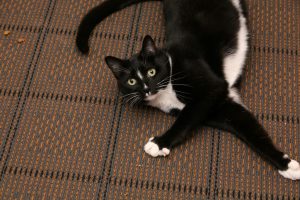
Take a second look and make an effort to see the loving best friend within…not just the color of his coat.
GRReat way to share this message with others is by reading together, “Don’t Judge a Book by its Cover” starring Mr. Rico as well as the first sequel “Start Off on the Right Paw.” Both are available on Amazon by Denise Fleck. The third book in the series will be coming Winter 2018!

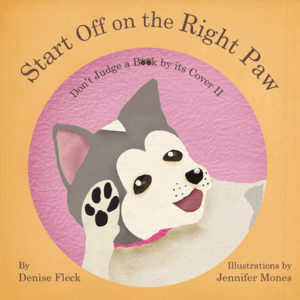 Please catch my VLOG on this topic: https://youtu.be/CHJrZLonbm8
Please catch my VLOG on this topic: https://youtu.be/CHJrZLonbm8
____________________________________________________
For 20 years Denise Fleck’s Sunny-dog Ink motto has been “Helping people to help their pets,” and she has…teaching more than 15,000 pet lovers animal life-saving skills and millions more on “The Doctors,” CNN, “Kirstie Alley’s Big Life,” Animal Planet and other TV shows. Denise is a frequent conference speaker, developed a line of Pet first aid kits and now offers classes online.
Note: The articles on this page are copyrighted. Please do not reprint or use portions for any purpose without written permission from the author. Request permission for usage by sending an email explaining how you’d like to use the materials and what parts specifically. Thank you in advance!

